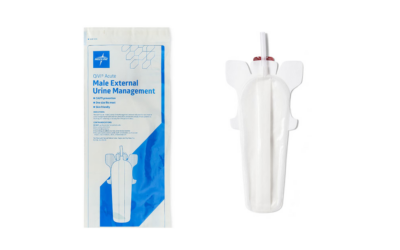By Aaron Bennett
National Inventors Hall of Fame
In recognition of this year’s Global Surgery Day (May 25), the National Inventors Hall of Fame (NIHF) invites you to learn how NIHF Inductee James “Jim” McEwen helped save lives with his invention of the automatic surgical tourniquet.
Learning the Importance of Medical Devices

James McEwen
Photo Credit:
National Inventors Hall of Fame
Born in Winnipeg, Manitoba, in 1948, McEwen gained an understanding of the value of education from a young age. Both of his parents had grown up on farms and experienced hardships during the Great Depression. Neither had the opportunity to finish high school, but they did find work with a Winnipeg aircraft company.
After the family had moved from Winnipeg to Vancouver, when McEwen was 6 years old, his father, a sheet metal mechanic, was diagnosed with polio and spent nearly a year in an iron lung. The entire family was quarantined for several weeks, causing McEwen to start his schooling late. Despite the delay, he benefited from the support of his teachers. “The grade one teacher was extremely good at introducing me to school and helping me catch up. She was very supportive of me, to the point where later, when I got an honorary doctorate from a university, I invited her to come along as my special guest.”
Witnessing his father’s battle with polio made an indelible impression on McEwen. “It helped me understand the impact that medical devices could have on a person’s life. So, it was very positive in that regard, seeing an iron lung help a person survive a critical phase of a disease, seeing an array of medical devices being used. That had a big impact at that age.”
As McEwen’s father recovered, he took up electronics as a hobby — an interest the father and son would share. McEwen credits his father not only for sparking his interest in electronics, but also for showing him how to respond to challenges and how to innovate.
Developing Advanced Technology
At the University of British Columbia, McEwen earned both his bachelor of applied science and doctoral degrees in electrical engineering. After completing doctoral research at Vancouver General Hospital, he established the hospital’s biomedical engineering department and began investigating instances of patients suffering limb paralysis, nerve damage and other injuries due to surgical tourniquet use. In the mid-1970s, mechanical pneumatic tourniquets were standard, and McEwen’s research revealed problems with these, including an unreliable pressure-regulating mechanism and the lack of a fail-safe feature to limit maximum cuff pressure.
The design process for a new tourniquet began with McEwen’s idea of using a computer to control the applied pressure. He incorporated some components made by his father as he built the first automatic surgical tourniquet prototype. By 1980, McEwen had developed a microprocessor-controlled system that was safer and more efficient than previous technology. An automatic timer provided an accurate record of inflation time, and audiovisual alarms would activate in the event of dangerously high or low cuff pressure. Additional safety features included automatic detection of air leakage, system integrity checks and a backup power source.
Today, nearly all modern tourniquet systems used in western countries are based on the work of McEwen and his colleagues.
Creating a Meaningful Legacy
In an interview with NIHF, McEwen shared the question that motivates his work: “How can I use what I have, whether it’s resources, talents or abilities, to help improve the lives of others?”
McEwen is named on more than 80 U.S. patents, along with many international patents, and he has received the Principal Award for Innovation from Canada’s Ernest C. Manning Awards Foundation. In addition to continuing his research into tourniquet technology, McEwen founded Delfi Medical Innovations to produce specialty tourniquets for applications including injury rehabilitation, emergency situations and military settings.
In a recent interview, McEwen spoke of his support for students who are overcoming obstacles and helping others along the way. Inspired by his own experience facing challenges while in school, he has established scholarships for students in public schools, including his own alma mater, David Thompson Secondary School in Vancouver. “We’ve set up a foundation, and one of the things we do is to give out many scholarships to students at a number of high schools. It’s been really inspirational to see students who have had to deal with huge obstacles. Somehow, they’ve triumphed. Somehow, they’ve succeeded. And then still, they find it within themselves to help the others in their peer group or their community. And that’s been very satisfying.”
Explore NIHF’s Many World-Changing Inductees
To learn the stories behind more inductees whose innovations have helped improve the lives of people around the world, visit the website.









